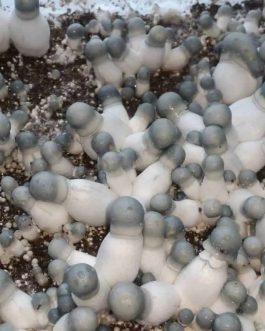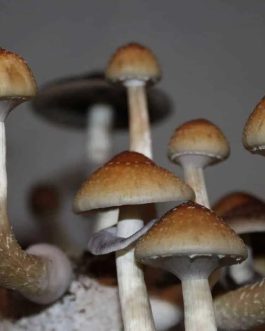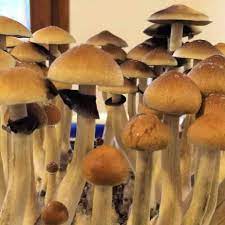Fungal caps and stems are superstars, but they’re not the only part of this organism worth exploring. Magic mushroom spores are equally (if not even more) fascinating for enthusiasts.
These tiny reproductive cells survive inhospitable environments, travel for miles, and produce new organisms seemingly from scratch. They also carry countless information about the fruiting body, helping scientists identify, analyze, and classify strains.
A magic mushroom spore is a single-cell organism with a set of chromosomes (no edible parts of psychedelic chemicals are yet present). It contains all the genetic material required to create the mycelium of a psilocybin shroom.
Fungi use spores to propagate their species. Mycelium develops when they germinate, and the fruiting body emerges above ground when the conditions allow it.
New spores emerge on these mushrooms, extending the cycle. They sit on the gills beneath the cap when the fruiting body matures. They may release due to external pressure, like an animal shaking their surface, or through internal discharge processes.
These cells are so tiny that they’re invisible to the naked eye. People can only notice them en masse when a mushroom releases a cloud to reproduce.
Mushrooms produce billions of spores to be discharged. Evolution made them near-impervious to adverse weather, too. They can survive most conditions: some even germinate in radioactive sites and outer space!
-
- Sale!
- PSYCHEDELIC
Albino Penis Envy Spores
- $26.99
- Contamination-free Albino Penis Envy spore syringes! The Albino Penis Envy mushroom is a hybrid of Penis Envy and PF Albino. One of the most popular researched spore strains by advanced microscopy researchers.
- Add to cart
-
- Sale!
- PSYCHEDELIC
B+ Cubensis Mushroom Spore Syringe
- $18.99
- The B+ mushroom is a very-easy-to-cultivate psilocybe cubensis mushroom variety/strain. B+ Spores are a dark purplish-brown color when viewed under a microscope.
- Add to cart
-
- Sale!
- PSYCHEDELIC
Golden Teacher Mushroom Spores
- $19.00
- The Golden Teacher is a popular and versatile strain with a beautiful golden cap and thick stem. Its resistance to contamination makes it ideal for novice researchers. Though moderately potent, it’s reported to deliver introspective, perceptual, and cognitive effects. This strain is a preferred choice for research about the biology and ecology of magic mushrooms.
- Add to cart



